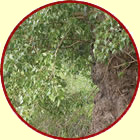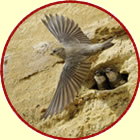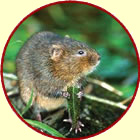 London's BAP priority habitats
London's BAP priority habitats
The London Biodiversity Action Plan (BAP) identifies priority habitats that are of particular importance for biodiversity in London. Many of these habitats are covered by our Habitat Action Plans (HAPs).
The London BAP has 11 Habitat Action Plans. Nine of these are for named habitat types, while another two are for land uses.
Most of our HAPs cover just one priority habitat, but others are broad habitat types that cover several priority habitats - for instance, Ponds, Lakes and Canals are all featured in the Standing Water HAP.
Some other important habitats do not have their own HAPs at present. We have targets to maintain the extent, enhance and/or increase the extent of all of our priority habitats.
We encourage all of our partners to take action to deliver the habitat targets on their own land, and incorporate them in their own BAPs. Developers also have excellent opportunities for habitat creation and improvement on new developments.
Partners and developers can use the London Habitat Suitability Maps to identify areas where creating and improving habitats would give the best benefit to biodiversity. More detailed versions of the maps are available to GiGL partners.
Sensitive management of priority habitats will take care of the needs of most of London's priority species.
Further details of our HAPs and habitat targets, including work to date and future plans, can be found on BARS, the UK-wide Biodiversity Action Reporting System.
The London BAP - Habitats
| Other Important Habitats |
|---|
| 12. built structures |
| 13. meadows and pastures |
| 14. fen, marsh and swamp |
| 15. open landscapes with ancient/old trees |
1. Acid grassland
Fine-leaved grasses, wildflowers and a distinctive group of insects and spiders find a home on London's remaining acid grassland, currently found only on London's larger public open spaces and golf courses.
Our Acid Grassland & Heathland Working Group leads on the Acid Grassland Habitat Action Plan. It has identified important sites for restoration of Acid Grassland habitats across London. The group is preparing a bid to the Heritage Lottery Fund to support restoration of these sensitive habitats. Progress on the HAP Acid Grassland will be reported on BARS.
Contact Nigel Reeve (NReeve[at]royalparks.gsi.gov.uk*) if you would like to get involved with the Working Group or make a contribution to London's Acid Grassland habitat targets.
To learn more about Acid Grassland in London, download LBP's public information booklet Acid Grassland - a nationally important habitat in London and for best practice guidance on managing Acid Grassland in London, download our advice booklet: Acid Grassland Conservation in London.
More information is available in our Acid Grassland Education Resource Pack.
2. Chalk grassland
Swaying summer flowers and the scent and 'hum of summer' were once a familiar experience on London's chalk grasslands. The Partnership works to protect London's remaining chalk grassland from intensive farming and encroaching scrub and woodland. We are promoting the cultural importance of these summer havens and restoring lost grasslands to their former glory through our Chalk Grassland Habitat Action Plan, currently led by London Wildlife Trust with its 'From Thorn to Orchid' Prpoject. Progress on the Chalk Grassland HAP will be reported on BARS.
3. Heathland
The distinctive purple haze of heathland, the result of millennia of land management, is home to a unique group of plants and animals. But heathland is rapidly losing ground as recreational land, scrub and woodland expand. Our Acid Grassland & Heathland Working Group leads on the Heathland Habitat Action Plan and has identified sites for restoration of Heathland in a number of London boroughs. The group is preparing a bid to the Heritage Lottery Fund to support restoration of these sensitive habitats. Progress on the Heathland HAP will be reported on BARS.
Contact Nigel Reeve (NReeve[at]royalparks.gsi.gov.uk*) if you would like to get involved with the Working Group or make a contribution to London's Heathland habitat targets.
The Working Group has also produced best practice guidance for heathland managers.
4. Parks & urban green spaces
The benefit that contact with nature provides is quietly confirmed by office workers who flock to their nearest greenspace for a lunch time retreat, and parents who explore life in miniature with their children at their local park or nature reserve. Churchyards and cemeteries, places of rest and quiet reflection, also teem with life. They provide greenspace where young and old alike can explore the wilder side of town - hear birdsong and discover butterflies, lichens, fungi and mosses.
The London Boroughs Biodiversity Forum leads on our Parks & urban green spaces action plan by providing support to parks and green space managers, and promoting the values and benefits of biodiversity for both parks and people. It also represents biodiversity interests on the board of the London Parks & Green Spaces Forum. Progress on this HAP will be reported on BARS.
Contact the group's lead, Valerie Selby(vselby[at]wandsworth.gov.uk*) if you would like to get involved.
For advice on managing parks for wildlife, download Wild Squares: attracting wildlife to London's squares and public gardens, which is based on the results of the London's small parks and squares: a place for nature? survey of small open spaces in central London.
Or download the GLA's Parks People and Nature: A guide to enhancing London's parks and green spaces in a changing climate or CABE Space's Making contracts work for wildlife: how to encourage biodiversity in urban parks.
The Diocese of London is developing plans for a Churchyards Ecology Survey that will take forward our Churchyards & Cemeteries Action Plan. Contact Brian Cuthbertson (Brian.Cuthbertson[at]london.anglican.org) to find out more about the survey.
5. Private gardens
London is not the grey block that represents it on many maps. The city's network of private gardens forms its largest area of greenspace providing many people with their first contact with nature. The Partnership's Private Gardens Action Plan is under review. Progress on the Private Gardens HAP will be reported on BARS. It hopes to carry forward its work with garden centres, gardeners, local authorities and public institutions to encourage wildlife friendly gardening across London.
Find out more about wildlife-friendly gardening with London Wildlife Trust's Wildlife Gardening Pack
Download London Garden City, GiGL's report on the state of gardens in London.
Contact Mathew Frith (mfrith[at]wildlondon.org.uk*) if you would be interested in forming a working group.
6. Reedbeds
Reedbeds have a quiet beauty - a sea of swaying stems topped by hazy purple flowers, providing refuge to birds, insects, fish and mammals. Reedbeds are naturally unstable, sensitive to recreation, invasive species, pollution and sea-level rise. The Partnership's Reedbed Working Group leads on the Reedbeds Habitat Action Plan, is planting new reedbeds, organises training workshops on reedbed management,and has produced best practice guidance on Reedbed management in London. Progress on the Reedbeds HAP will be reported on BARS.
Contact Richard Bullock (Richard.Bullock[at]wwt.org.uk*) to contribute to the work of the group.
7. Rivers & streams
Over 600 kilometres of river flow through London, although many now form part of the city's sewage system. Outmoded flood management - straightening, boxing-in and burying rivers - has hit the wildlife and recreational value of these waterways hard. The Partnership's Rivers & Streams Working Group is delivering the targets in the Rivers & streams action plan, working to restore London's rivers to a more natural state, benefiting wildlife and people, and contributing to the London Rivers Action Plan. Progress on the Rivers & Streams HAP will be reported on BARS.
Contact Dave Webb (david.webb[at]environment-agency.gov.uk*) to contribute to the work of the group.
If you are reporting progress on river restoration on BARS, please use these Guidelines.
8. Standing water
Home to fish, amphibians, birds and a host of other wildlife, standing water (ponds, lakes and canals)is also enjoyed by recreational fishermen and walkers. The threat of development, natural infilling and climate change threaten the biodiversity and recreational value of this habitat.
Our Standing Water Working Group leads on the Standing Water Habitat Action Plan and is restoring and creating ponds across the capital. Progress on the Standing Water HAP will be reported on BARS.
Contact the Standing Water HAP lead, Kathy Wormald (Kathy.Wormald[at]froglife.org*) if you would like to get involved with the Working Group or make a contribution to London's Standing Water habitat targets.
Canals were once London's commercial arteries, carrying goods to and from the heart of the city, our canals still flow with life. But the pressure of urban life - vandalism, pollution, development and recreation - pose challenges. If you could lead work on Canals we'd be particularly interested in hearing from you.
9. Tidal Thames
The Thames is London's 'wildlife superhighway', linking green spaces and smaller waterways, and supporting species and habitats not found anywhere else in the capital.
Our Tidal Thames HAP is currently under review and may be incorporated into the Rivers & Streams HAP. Progress on the Tidal Thames HAP will be reported on BARS.
10. Wasteland
Wasteland habitat develops on previously developed land and houses a remarkable diversity of species - providing informal space for wildlife and people. But wastelands receive little protection and often disappear under new development. The Partnership's Wasteland Habitat Action Plan is under review. Progress on the Wasteland HAP will be reported on BARS. We hope to carry forward our work with developers, planners and landowners to provide guidance on the management of these unique habitats.
Contact Mathew Frith (mfrith[at]wildlondon.org.uk*) if you would be interested in forming a working group.
11. Woodland
Thousands of years of land management has dramatically reduced our woodland cover. As the timber market declined, so too did positive woodland management. Just under five percent of London is still woodland, but their quantity and health is under threat. The London Orchard Project is leading on the Orchard targets in the Partnership's Woodland Habitat Action Plan.Progress on the Woodland HAP will be reported on BARS.
For guidance on managing orchards for biodiversity, download PTES Guide to Orchard Management for Wildlife.
The Capital Woodlands project, which finished in 2010, was the focus for the rest of the HAP but we do not have a working group at present.
Capital Woodlands produced the following management guidance documents:
Woodland Management in London
Producing Fuel from London's Trees and Woodland
Managing Trees and Woodlands for Bats in London
Social Dynamics of London's Trees, Woodlands and Green Spaces
12. Built structures
London's wildlife depends not only on greenspace, but also on the artificial fabric of the city: buildings, bridges, car parks, wharfs, jetties and chimneys. Some species depend almost entirely on built structures.
We do not have a Built Structures Action Plan or Working Group at present.
Planners, developers and building owners can Design for Biodiversity and install features beneficial to wildlife, like living roofs. We have targets on BARS for this important habitat in London, but no working group or HAP at the present time. Partners are strongly encouraged to take ownership of the targets by taking action to protect and enhance existing meadows, and create new meadows on their land. Plantlife's Saving Our Magnificent Meadows project may help partners deliver these targets. We have targets on BARS for this important habitat in London, but no working group or HAP at the present time. Partners are strongly encouraged to take ownership of the targets by taking action to protect and enhance existing fens, and create new fens where appropriate. We have targets on BARS for this important habitat in London, but no working group or HAP at the present time. Partners are strongly encouraged to take ownership of the targets by taking action to protect and enhance existing habitat.
13. Meadows and pastures
14. Fen, marsh and swamp
15. Open landscapes with ancient/old trees
*To prevent spam, we have removed the '@' from all e-mail addresses on this website. To get in touch, simply copy the e-mail and replace '[at]' with '@'
































